|
|
 |
|
|
|
 |
Shining Force III (Scenarios 2 & 3)

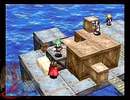
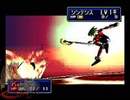
People who don't know the series at all will probably take a cursory look at the Saturn's library and say "but Shining Force III came out in North America — what's the problem?" Yes, Shining Force III came out in North America — Scenario 1 did, at least. Of course, the presence of a Scenario 1 implies a Scenario 2 at the very least, and as it transpires Scenario 3 is also there
So what's the big deal? Shining Force III's individual parts were never meant to stand on their own, but form a cohesive whole. The game as a whole certainly sports the best storytelling in the series (not terribly difficult), and also features a massive campaign with a great number of memorable battles. The Saturn may not have been known for its 3D capability, but talented developers could make it perform just as well as the PlayStation in this regard. Anyone with even a smidgen of liking for the series would have profusely enjoyed the whole of the game, not just the one-third of it that crossed the ocean.

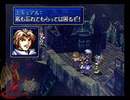
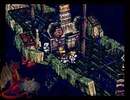
So what happened? The easy answer is that Sega localized Scenario 1 along with Panzer Dragoon Saga, Burning Rangers, and The House of the Dead for the company's final Saturn releases outside Japan, then sat on its hands for a year until the Dreamcast's launch. This is certainly accurate, but I can't help thinking there was some active malice on the part of Sega to help explain things. After all, not bringing Scenario 2 and Scenario 3 over after establishing the game's presence in North America, while absolutely nothing else was coming out, may be the most moronic/spiteful thing ever visited upon Sega's fan base. These are not words I speak lightly, but the enormity of the mistake made here is hard to overstate. It will always be a black mark against Sega that can never fade.
So instead Sega brought forth the numerous Shining-in-name-only games that came later, until they finally started to get decent and the company dropped that idea. Wonderful. - Mike Moehnke
|
|
 |
Fire Emblem: Genealogy of the Holy War

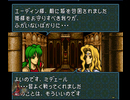
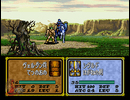
For a long time, Fire Emblem was a Japan-only series. Ever since the seventh game in the series, Rekka no Ken (the GBA Fire Emblem game that lacks a subtitle), was finally released, we've been far more fortunate, only missing out on the DS remake of the third game. Out of the games we did miss, the one that I most wish were released here is the fourth: Fire Emblem: Seisen no Keifu, or as it is commonly translated, Genealogy of the Holy War. It is a rather ambitious game, introducing many features to Fire Emblem for the first time such as skills, the relationship system, and the weapons and magic triangles. Rather than each chapter consisting of a single battle, chapters are long and multiple castles need to be captured. Going back to the relationship system, the game's story is broken into to two generations. Female characters who fall in love will have children who inherit the stats and weapons of their parents. They become playable in chapter six, after a time skip of seventeen years. The story is also grand in scope, involving the history of the continent of Jugdral, political intrigue involving the eight kingdoms of the continent, and the machinations of archbishop Manfroy to instigate a second holy war and revive the evil dragon god Loptry. It's a real shame that such an ambitious and important game to the series was never localized.
Unless Nintendo feels like revamping Fire Emblem Gaiden, considered by many to be the black sheep of the series, Genealogy of the Holy War is likely the next game to be remade. Fire Emblem's newfound international popularity should make a hypothetical remake a shoe-in for localization. It could easily use the marriage and second generation system from Awakening and Fates. However, there's still the issue of half-sibling incest playing an important role in the game's story. It's a small wonder that there has been no word of a remake. - Cassandra Ramos
|
|
 |
Moon: RPG Remix Adventure
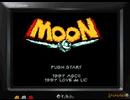


During the PlayStation era, RPGs were often considered by their fans, the Great Old Ones of RPGamer, to be the private reserve of empaths and sages. Button-mashers needed not apply: RPGs were deep games for warrior-poets who revelled in the written word and the cold, masculine logic of turn-based battles. In spite of this glowing reputation, RPGs had just as many quirks to be lampooned and interrogated as any other creative work. To put it another way, a genre is defined by where its parodies bite deepest: Love-de-Lic's Moon: Remix RPG Adventure demonstrates the tropes and limitations of its precursors by questioning what it means to be a JRPG hero.
Moon begins like a standard Dragon Quest-inspired JRPG, complete with walls of text and rainbow bridges. However, this turns out to be a game-within-the-game, played by a young boy — the real protagonist. After going to sleep, the child is sucked, Captain N-style, into his video game — which is very different on the other side.
The inhabitants of the game world fear Zigfried the Hero, whose wanton slaughter makes him more like a murderous hobo than a paragon of light. Like everyone else, however, he requires Love and understanding. The Boy levels up by helping people and obtaining Love. One way he does this is by guiding the souls of monsters killed by Zigfried to the moon where they can find peace, but every NPC has different needs. By using familiar JRPG dressing to explore issues of non-violence and love, Moon questions and celebrates the idiosyncratic world of RPGs. Given the success of Undertale, which explores similar themes, it's possible this Moon just rose too early for Western success. - Zach Welhouse
|
|
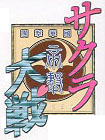 |
Sakura Taisen
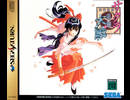
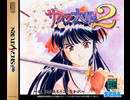

Sakura Taisen was one of those series that was rarely given any love outside of Japan. A mix of a strategy RPG and dating simulation gave Sakura Taisen a unique balance of gameplay and unforgettable experiences. Sakura Taisen pushed boundaries with heated relationships farther than other titles that tried this formula, such as Azure Dreams, Thousand Arms, and even Fire Emblem to some extent. It was a game, and later a series, to enjoy countless times as decisions off the field could change the battles significantly. Fiery romances and challenging battles awaited gamers with each release of the series. The games were quite popular among Japanese gamers, as the first four ranked on Famitsu's top 100 games of all time in 2006. The fifth title however, despite being released in 2005, did not make this list.

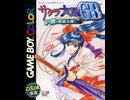
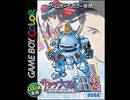
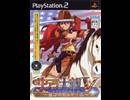
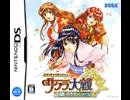
While NIS America did translate the fifth installment, Sakura Wars: So Long My Love, it wasn't released until nearly five years after the Japanese release. While reviews of the title were overall positive, it felt like too little too late. It made me want to play the older games, with fresh translations, and while this was hinted at if the game sold well, it never came to be. Perhaps the series had lived out its appeal, or run out of original themes, but there hasnft been another Sakura Taisen title since, making it very unlikely for this series to see the light of day outside of Japan again. - Mikel Tidwell
|
|
RPGamer's What Could Have Been
Intro - 1 - 2 - 3
|









